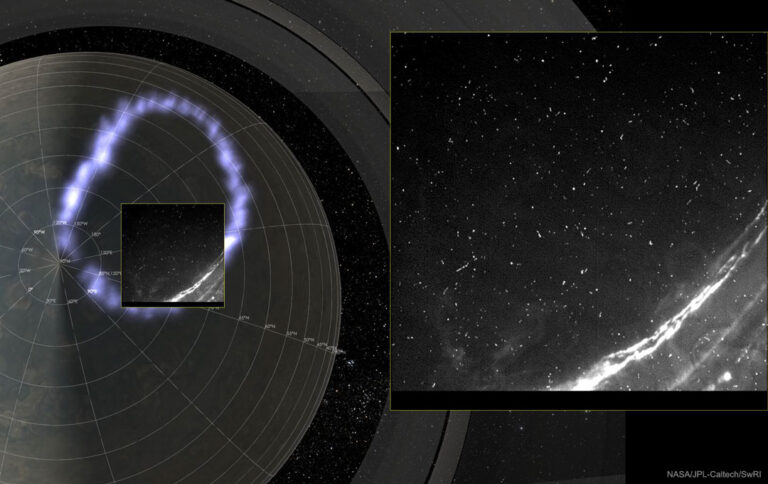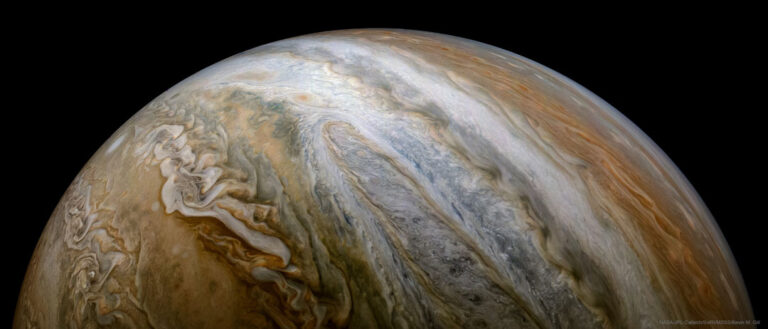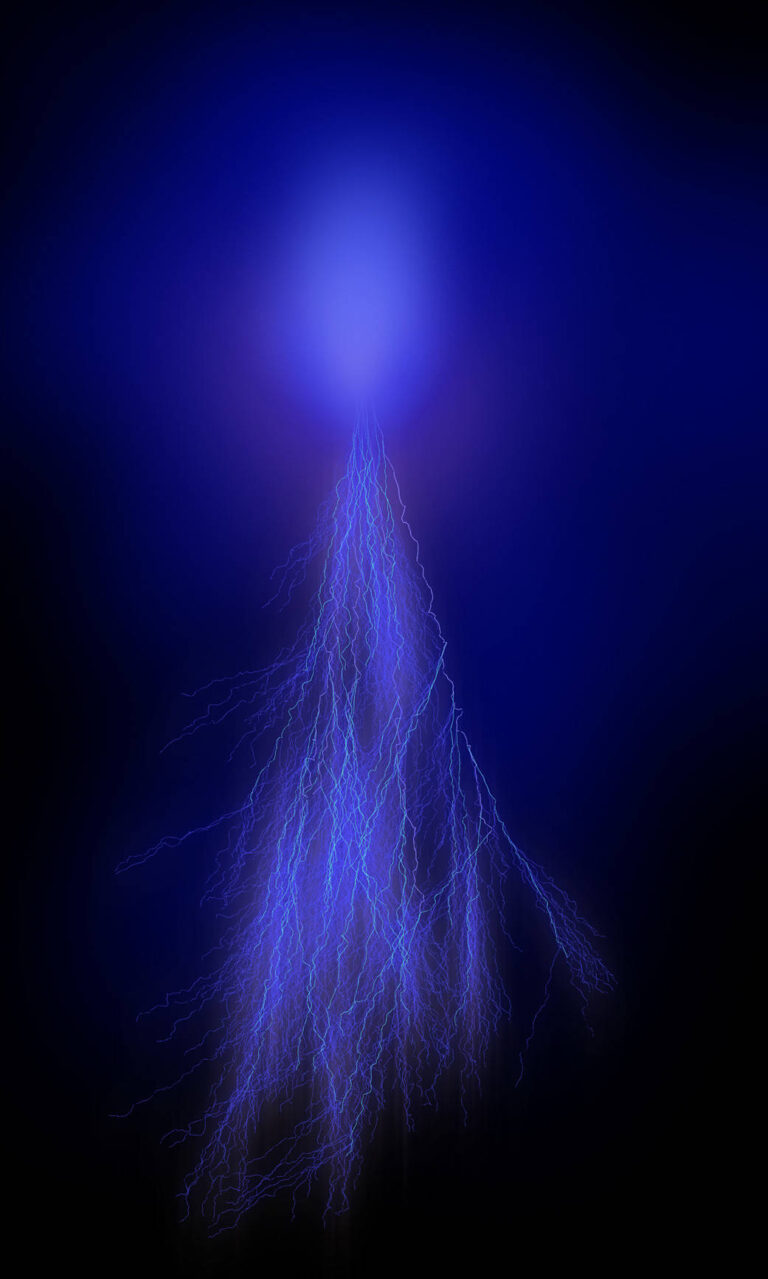木星的极光及闪电
2021年03月24日 Aurorae and Lightning on Jupiter Image Credit: NASA, JPL-Caltech, SwRI; Text: Natalia Lewandowska Explanation: Why does so much of Jupiter’s lightning occur near its poles? Similar to Earth, Jupiter experiences both aurorae and lightning. Different from Earth, though, Jupiter’s lightning usually occurs near its poles — while much of Earth’s lightning occurs near its equator. To help understand the difference, NASA’s Juno spacecraft, currently orbiting Jupiter, has observed numerous aurora and lightning events. The featured image, taken by Juno’s Stellar Reference Unit camera on 2018 May 24, shows Jupiter’s northern auroral oval and several bright dots and streaks. An eye-catching event is shown in the right inset image — which is a flash of Jupiter’s lightning — one of the closest images of aurora…










